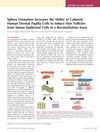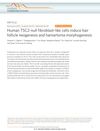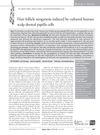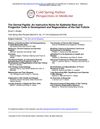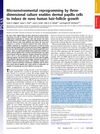Dissociated Human Dermal Papilla Cells Induce Hair Follicle Neogenesis in Grafted Dermal-Epidermal Composites
August 2013
in “
Journal of Investigative Dermatology
”
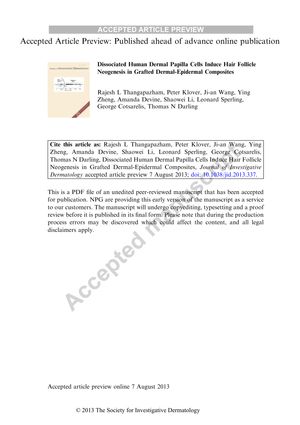
TLDR Human skin cells can create new hair follicles when transplanted into mice.
In the 2013 study by Thangapazham et al., researchers demonstrated that dissociated human dermal papilla (DP) cells from six donors could induce hair follicle neogenesis when grafted into dermal-epidermal composites on female nude mice. After eight weeks, hair follicles were observed in grafts from donors with higher alkaline phosphatase activity in their DP cells, suggesting the importance of active DP cells in hair follicle formation. The newly formed hair follicles had all typical structures and were confirmed to be of human origin. The study concluded that human DP cells are capable of inducing complete pilosebaceous unit formation in vivo, providing a potential model for evaluating hair loss treatments and the regeneration of skin appendages.
